Review: the CPU repeatedly executes these steps in the instruction execution cycle:
|
These steps must be executed in the given order !!
We will now study how to sequence events using clock signals
Simplification: consider only the portion of the datapath that connect the registers and the ALU:
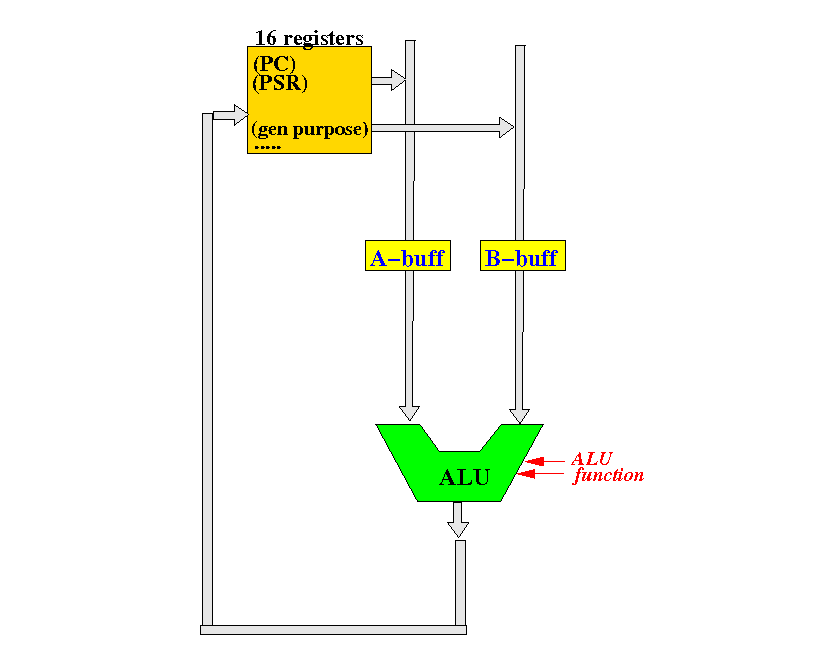
The sequencing also applys when MAR and MDR are connected to the datapath.
(1) To perform an operation, data stored in registers must first be sent to the ALU

The source operands for the ALU are stored in the A-buffer and B-buffer help-registers
(2) The computed result is then stored in the destination register
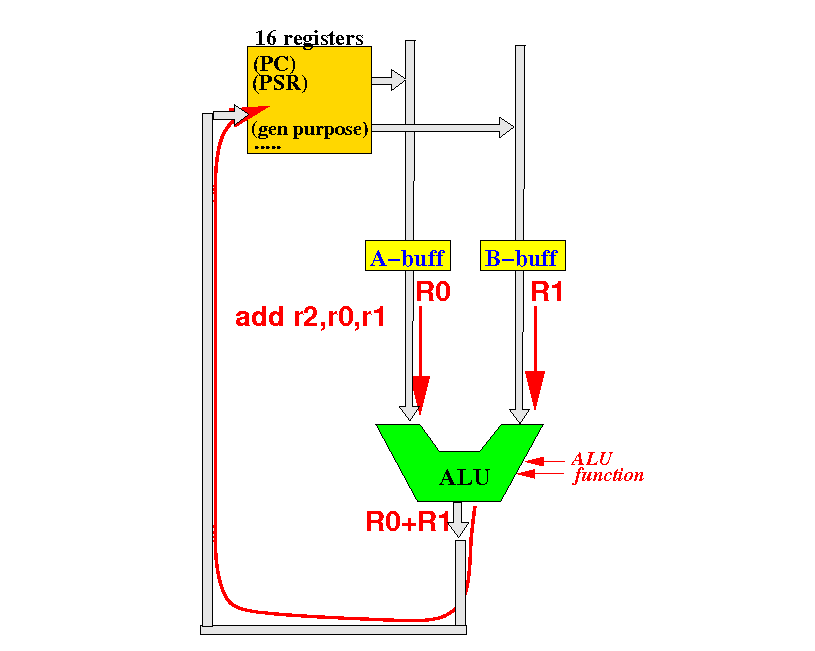
How do we make sure that these 2 events happens sequentially ??? (Hint: we need a clock !)
Reminder: A-buffer, B-buffer and the registers are memory circuits
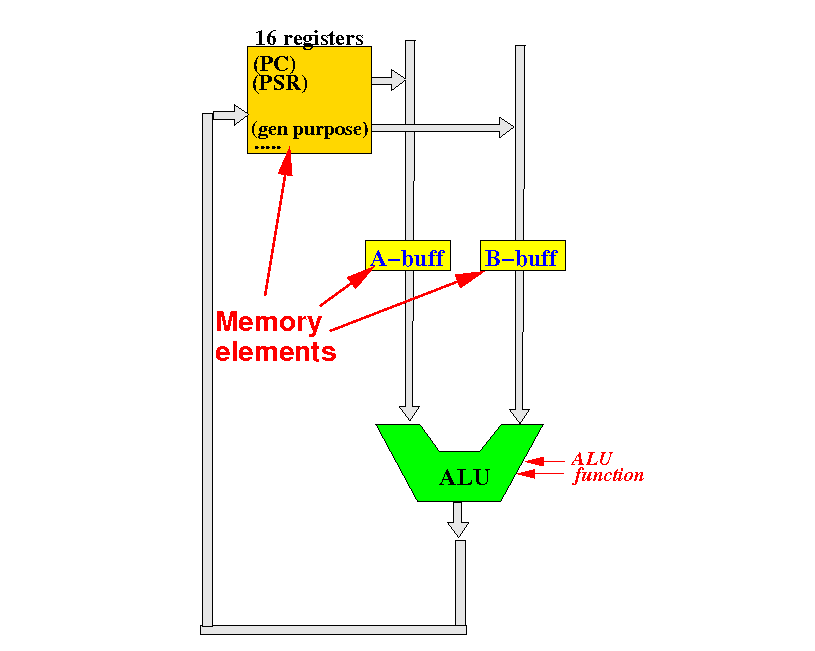
Recall how memory circuits operate !!
The values stored in a memory circuits is only updated when it receives a clock signal:

How do we fetch the data from registers into the A-buffer and B-buffer registers ?

Data from registers are fetched into A-buffer and B-buffer at the clock pulse:
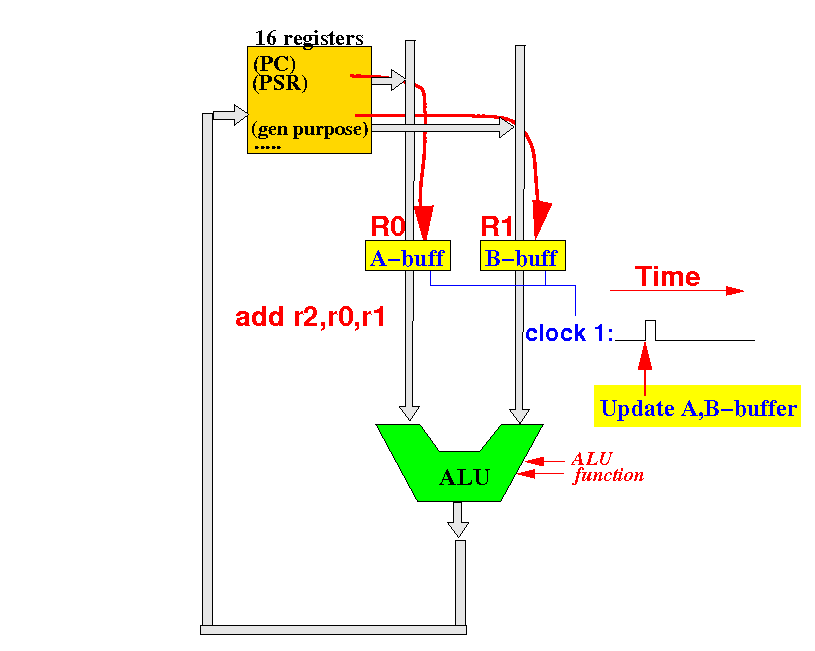
After a little while, the A-buffer and B-buffer will become de-activated:
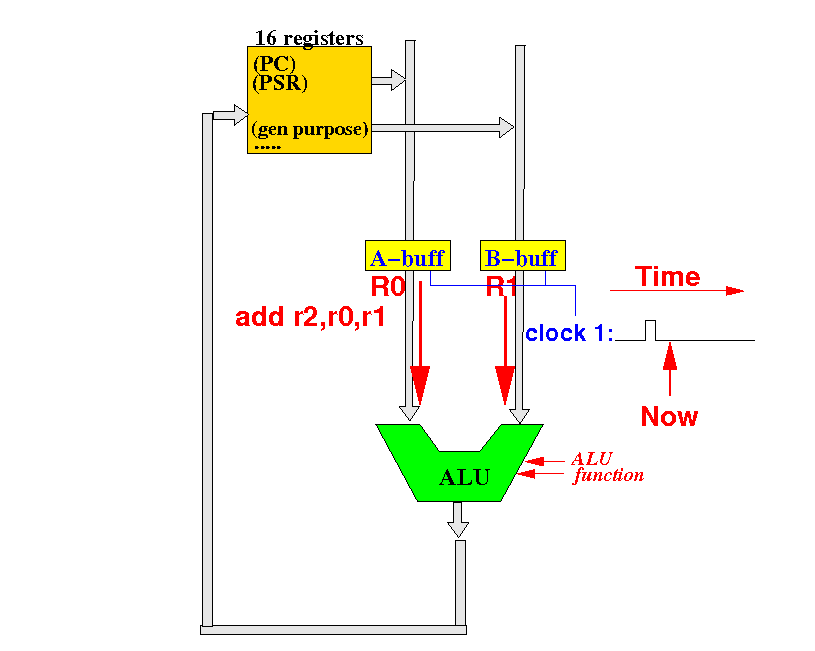
The A-buffer and B-buffer outputs will remain constant (because the clock = 0)
How do we make sure the registers are updated after the event of updating A,B-buffers ?
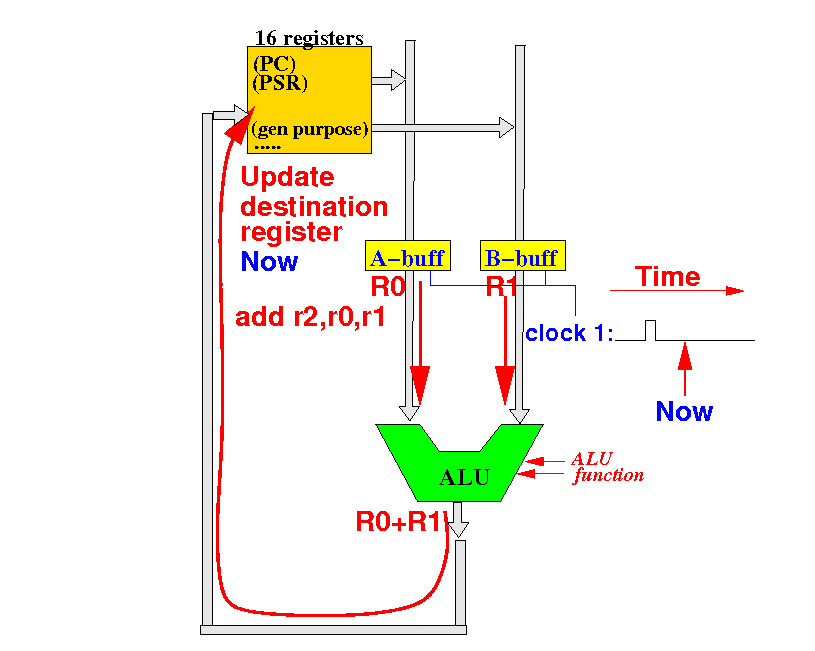
Notice the time "Now" is after we have updated A,B-buffers !!!
Answer: use a clock signal that pulses after the clock 1:
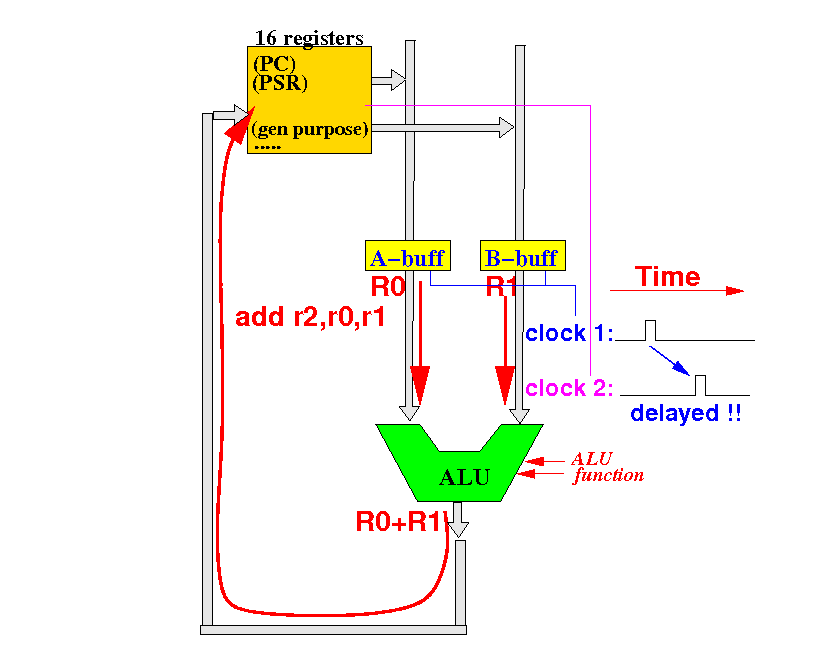
The delayed clock signal will ensure that updating registers happens after updating A,B-buffers
Activating timing can be chronologically controlled by using a "N phase clock":
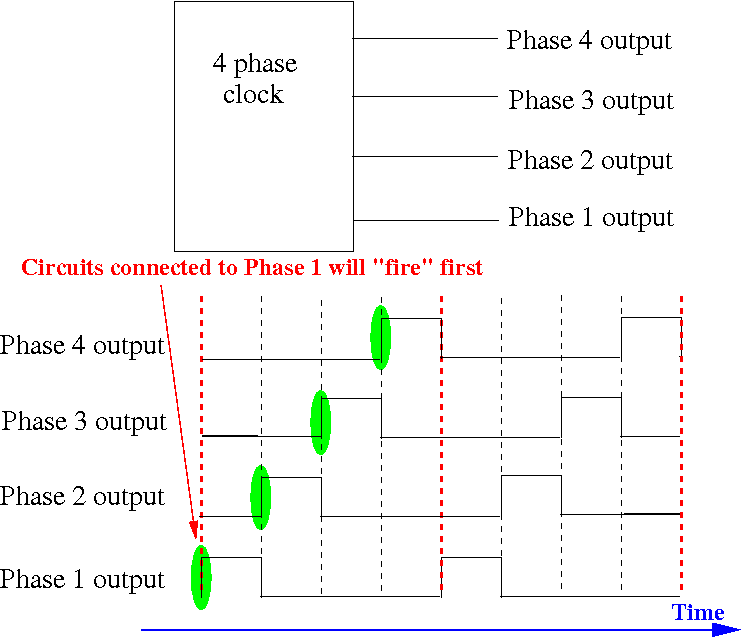
Our CPU will use a 4 phased clock because there are 4 different chronological milestones in the CPU (you will make this circuit in a project).
Let's activate the components inside the CPU in correct chronological order:
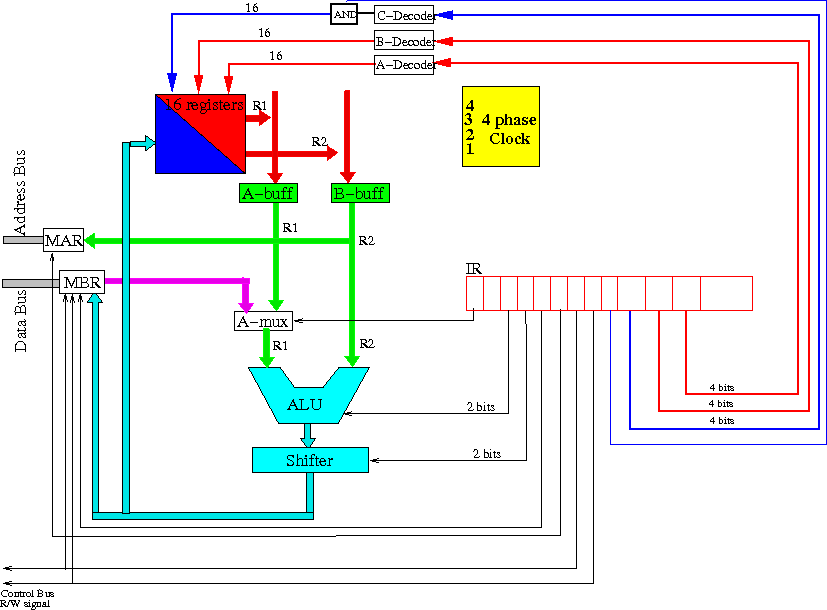
What must happen first in an instruction execution cycle ???
(1): fetch the next machine instruction and store it in the instruction register (IR):
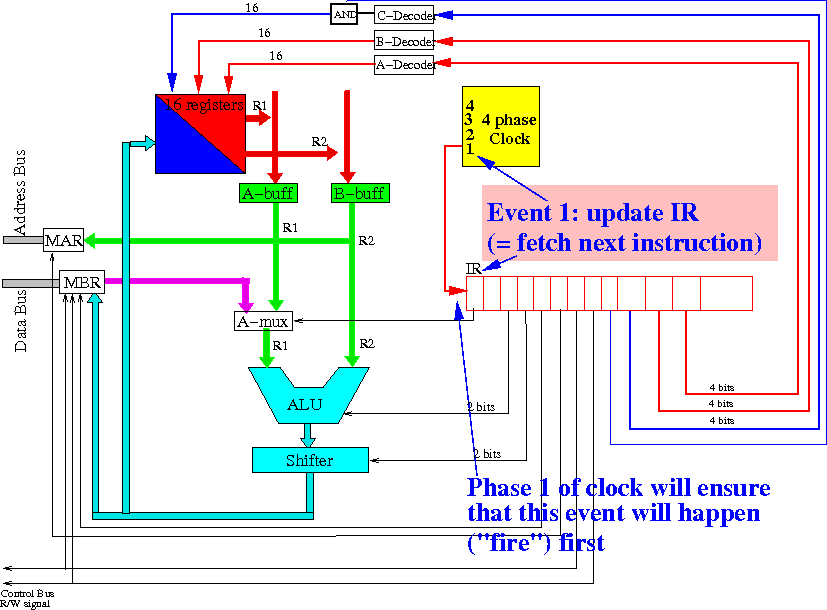
Phase 1 of the clock happens the earliest of all phases chronologically !!
The newly fecthed machine instruction will send out control signals:
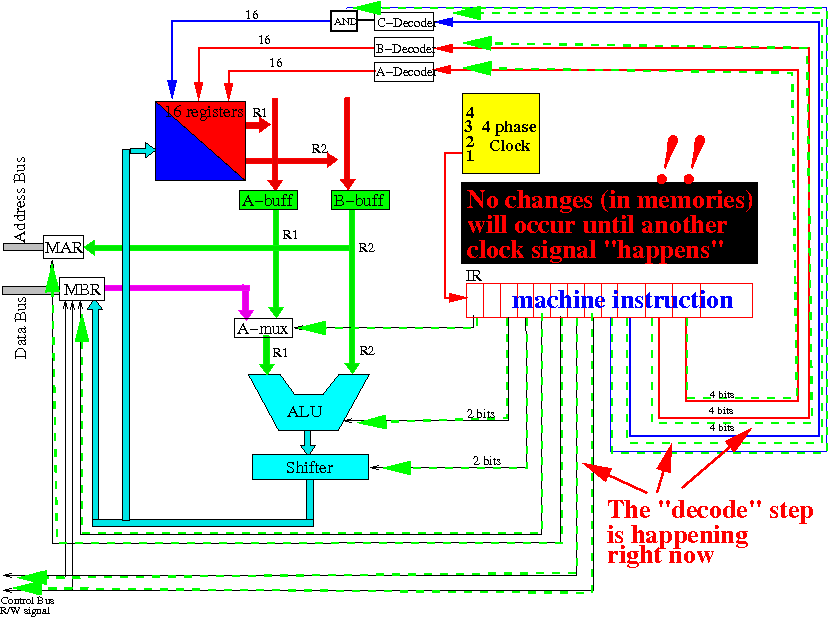
What must happen next in an instruction execution cycle ???
(2): fetch the operands from the registers and store them in the A & B-buffers:

Phase 2 of the clock always happens after Phase 1 !!
Result: we fetch the operands for the fetched instruction in Phase 1 !

What must the CPU update next in an instruction execution cycle ???
(3): update the MAR using B-buffer data and/or compute with the data in A & B-buffers:
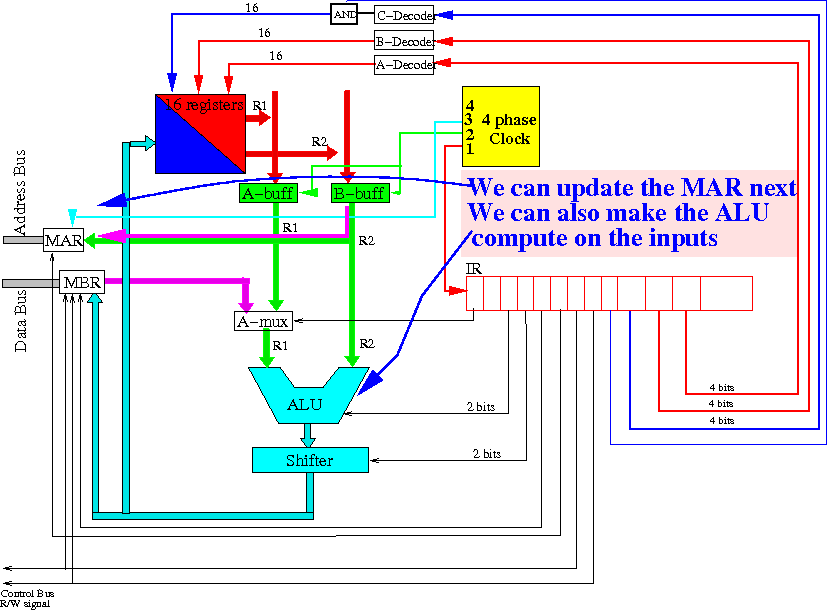
Phase 3 of the clock ensures this happens with correct values inside the A & B-buffers !!!
Result: (a): MAR=B-buffer and/or (b): the ALU has computed the correct result
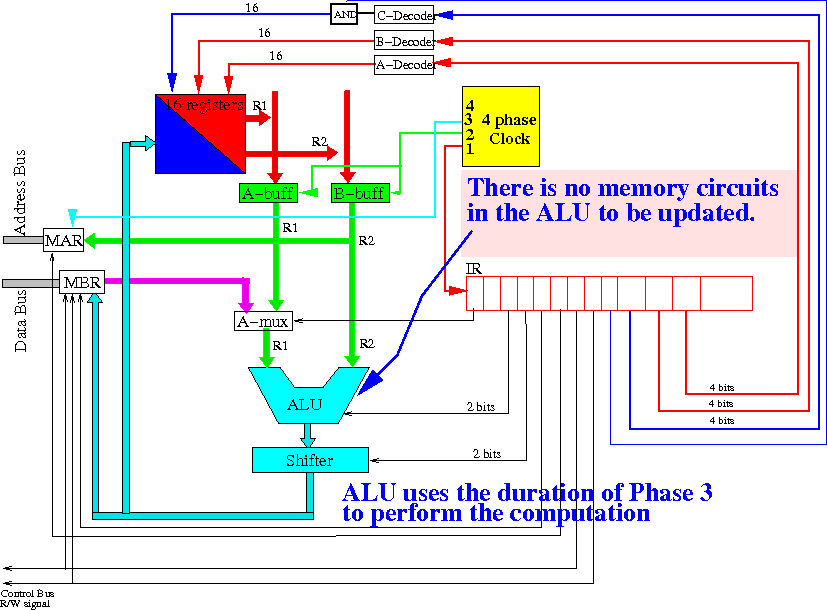
What must the CPU update next in an instruction execution cycle ???
(4): (a): store the result in a register or (b): store the result to memory:
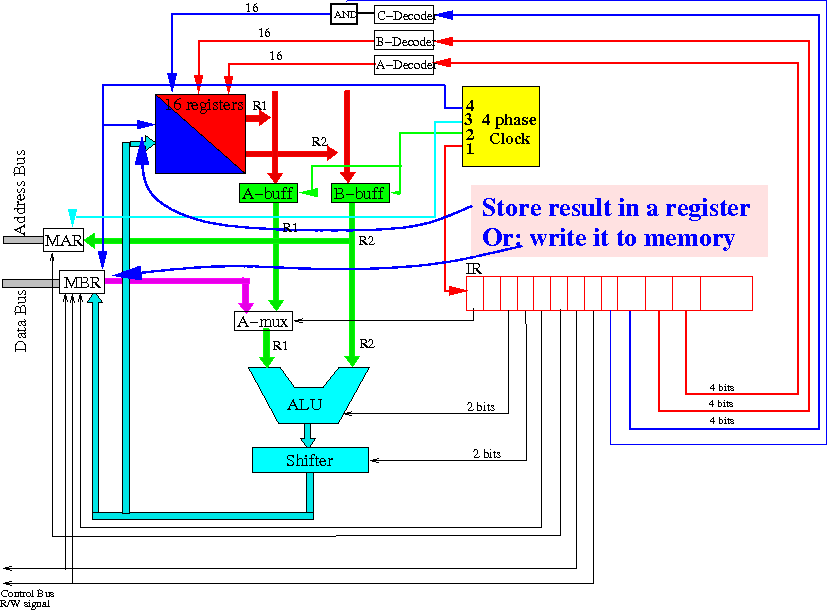
Phase 4 of the clock will ensure that we will use a correctly computed value from the ALU
The instruction execution cycle is completed and a new cycle starts immediately:
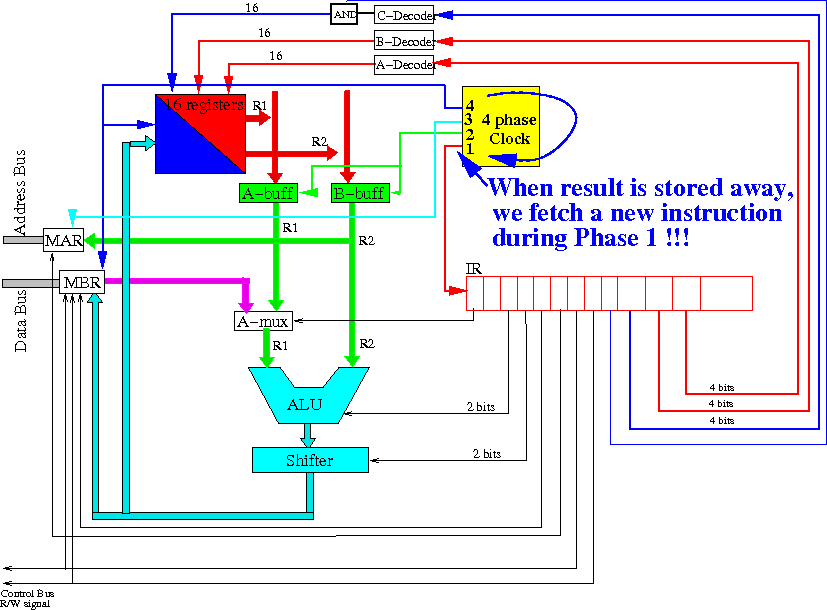
And so on...